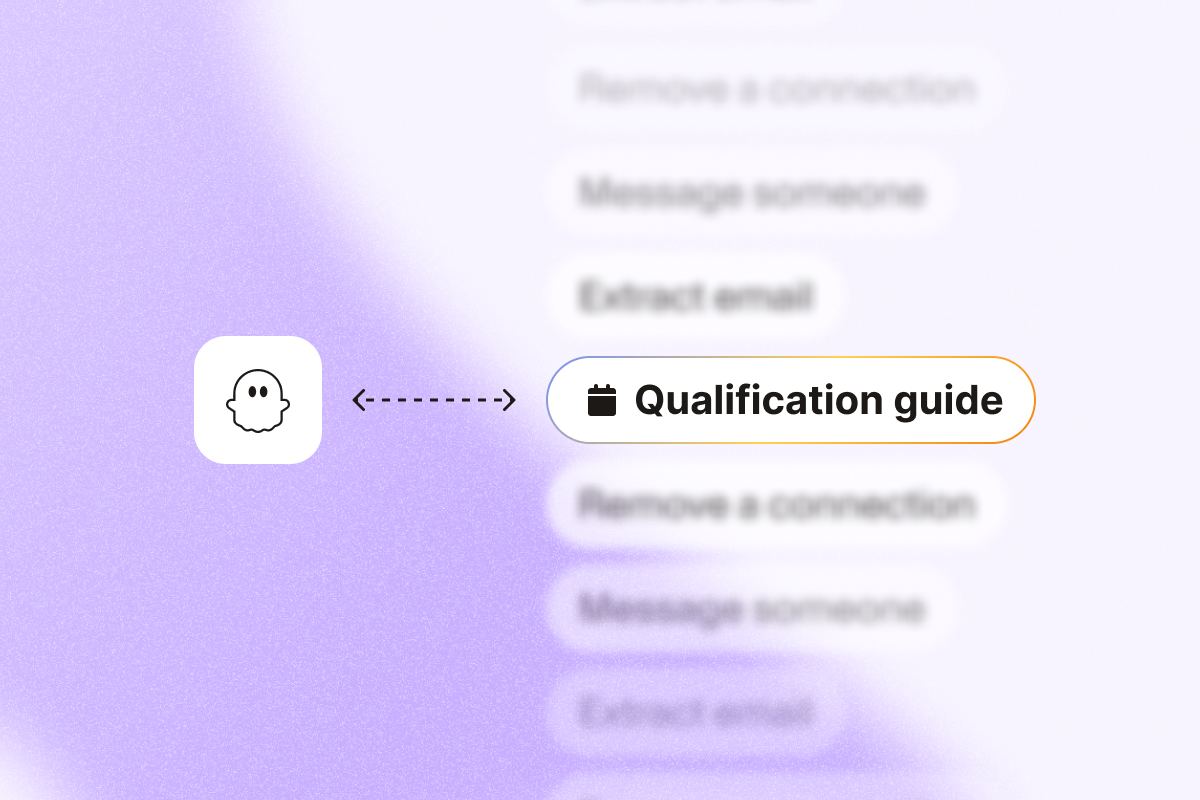If you’re getting lots of leads but not enough conversions, chances are your lead qualification process needs work. A good lead qualification system helps you determine who’s worth contacting and who’s not.
In this guide, we’ll walk you through how to build a lead qualification process that works, from data enrichment to lead scoring, so you don’t waste time on leads that were never a fit in the first place.
AI highlights
- Lead qualification is the process of identifying which prospects are worth your team’s time based on fit and interest, so you can focus only on those most likely to convert.
- A solid lead qualification process improves sales productivity, boosts conversion rates, and helps sales and marketing stay aligned on who to prioritize.
- Not all qualified leads are the same: MQLs engage with marketing, SQLs show buying intent, and PQLs prove their interest through real product usage.
- Frameworks like BANT, CHAMP, MEDDICC, and FAINT help structure your lead evaluations and keep your sales team consistent and focused.
- Here’s how to build your lead qualification process:
| Action | Description | Best Practice |
| Identify who your Ideal Customer Profile (ICP) is | Pinpoint firmographics and behaviors of your best customers. | Use AI to spot patterns in your top clients. |
| Source leads matching your target audience | Find people who fit your ICP. | Automate lead extraction on LinkedIn. |
| Enrich your lead data using automation tools | Add relevant context to each lead that will help with lead qualification. | Use tools like PhantomBuster’s LinkedIn Profile Scraper to automate the process. |
| Define your lead qualification criteria | Know what a “good lead” looks like. | Align with your sales cycle (BANT, etc.). |
| Use AI to score leads based on your criteria | Prioritize by likelihood to convert. | Create AI prompts that match your criteria. |
| Leverage sales calls to ask key qualifying questions | Dig deeper via conversations. | Use a checklist, but keep it human. |
| Review lead data and refine your qualification process | Review what works and iterate. | Track results every 3 months and adjust your criteria. |
What is lead qualification?
Lead qualification is the process of determining which potential buyers are worth your time and resources.
Instead of chasing every lead that comes your way, you focus on those who fit your product or service and show genuine interest.
Think of it as a filtering system that helps you direct your energy toward high-quality prospects, creating a smoother and more effective sales pipeline.
Why is lead qualification important?
Implementing a solid lead qualification process delivers multiple benefits that directly impact your sales performance:
- Saves time and increases sales productivity: By focusing only on leads with high conversion potential, your sales team can use their time more efficiently.
- Provides better customer experience: When you target the right prospects, you can tailor your approach to their specific needs, creating more meaningful interactions.
- Helps forecast sales: Qualified leads provide more reliable data for sales projections, helping you optimize your sales process.
- Improves conversion rates: Concentrating on prospects who are a good fit naturally increases your close rates.
- Aligns sales and marketing: A shared lead qualification framework ensures both teams work toward the same goals with consistent criteria.
Lead qualification helps your team focus on hot leads, move faster, and spend less time chasing dead ends.
Common types of qualified leads
Not all qualified leads look the same. Understanding the different types helps determine the appropriate next steps in your sales process.
| MQL (Marketing Qualified Lead) | SQL (Sales Qualified Lead) | PQL (Product Qualified Lead) | |
| Core Indicator | Engagement with marketing content | Direct interest in sales conversation | Actual product usage |
| Triggered By | Content downloads, webinar attendance, multiple website visits | Demo requests, pricing page visits, direct inquiries | Free trial usage, feature adoption, usage patterns |
| Focus | Interest in educational content | Interest in product specifics | Experience with the product |
| Typical Intent | Research and information gathering | Considering purchase options | Evaluating product fit through usage |
| Next Step Goal | Nurture toward sales readiness | Qualify further and move to opportunity | Convert to a paid plan based on the value experienced |
| Owned By | Marketing team | Sales team | Product/Sales team |
Marketing Qualified Leads (MQL)
An MQL is a lead who has shown interest in your product or service but isn’t ready to talk to sales yet. They might’ve downloaded a whitepaper, subscribed to your newsletter, or interacted with your content multiple times. These actions suggest curiosity and potential, but not yet purchase intent.
👉 Example: Someone who signs up for a free lead generation guide on your website.
The marketing team typically nurtures MQLs through targeted content and campaigns until they’re ready to be handed off to sales.
What to do next:
- Nurture them with targeted email sequences, remarketing ads, or useful blog content.
- Track content engagement and lead behavior in your CRM or marketing automation tool.
- Use scoring rules (e.g., 5 points for a webinar, 10 for a practical guide) to decide when they’re ready to pass to sales.
Sales Qualified Leads (SQL)
SQLs have moved beyond general interest. They’ve taken specific actions that indicate they’re ready to speak with your sales team. This might include requesting a demo, booking a call, or asking for pricing details.
👉 Example: A lead who asks to speak with a rep after reading your pricing page or attending a webinar.
At this stage, they expect human interaction and clear answers.
What to do next:
- Prioritize quick follow-up with a personalized message or call.
- Confirm budget, timeline, and decision-makers early in the conversation.
- Use discovery questions to dig deeper into their pain points and buying process.
Product Qualified Leads (PQL)
PQLs are a bit different, as they’re identified through product usage. These leads have already experienced your product (usually via a free trial or freemium plan) and shown signs they’re getting real value from it.
👉 Example: A freemium user who hits usage limits or invites team members to your platform.
Because they’ve already seen your product in action, PQLs are often much closer to converting than cold leads.
What to do next:
- Trigger in-app or email nudges when they hit key usage milestones.
- Personalize your warm outreach strategy based on their activity (e.g., “I saw you’ve invited your team—want to explore the team plan?”).
- Score PQLs based on product engagement to help sales prioritize the warmest users.
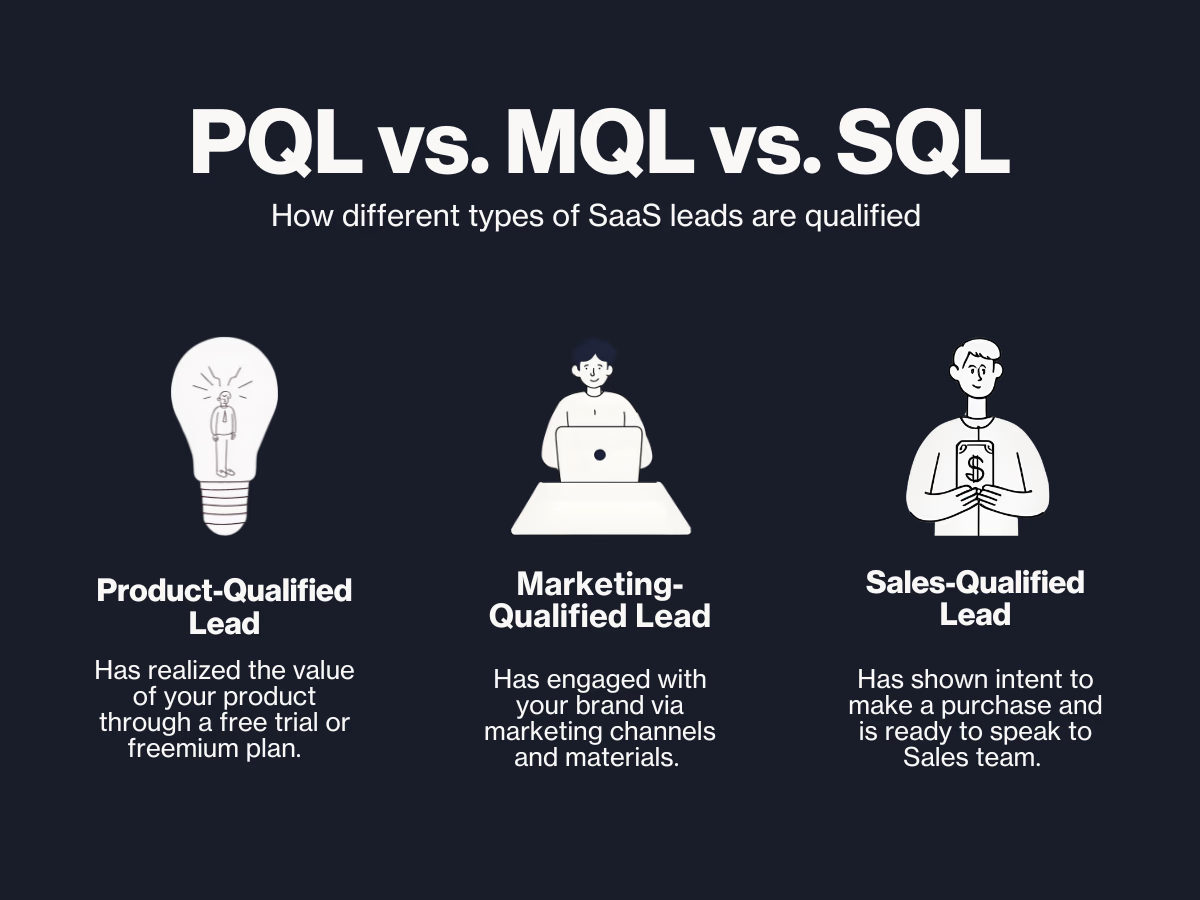
How to create your lead qualification process
A strong sales lead qualification method helps your sales team focus on the right people. The idea is simple—talk to leads more likely to convert and avoid wasting time on poor fits.
Here’s how to build a reliable lead qualification strategy from the ground up.
1. Identify who your Ideal Customer Profile (ICP) is
Your ICP is the type of company that gets the most value from your product. It includes firmographic details like industry, company size, location, pain points, and buying behaviors.
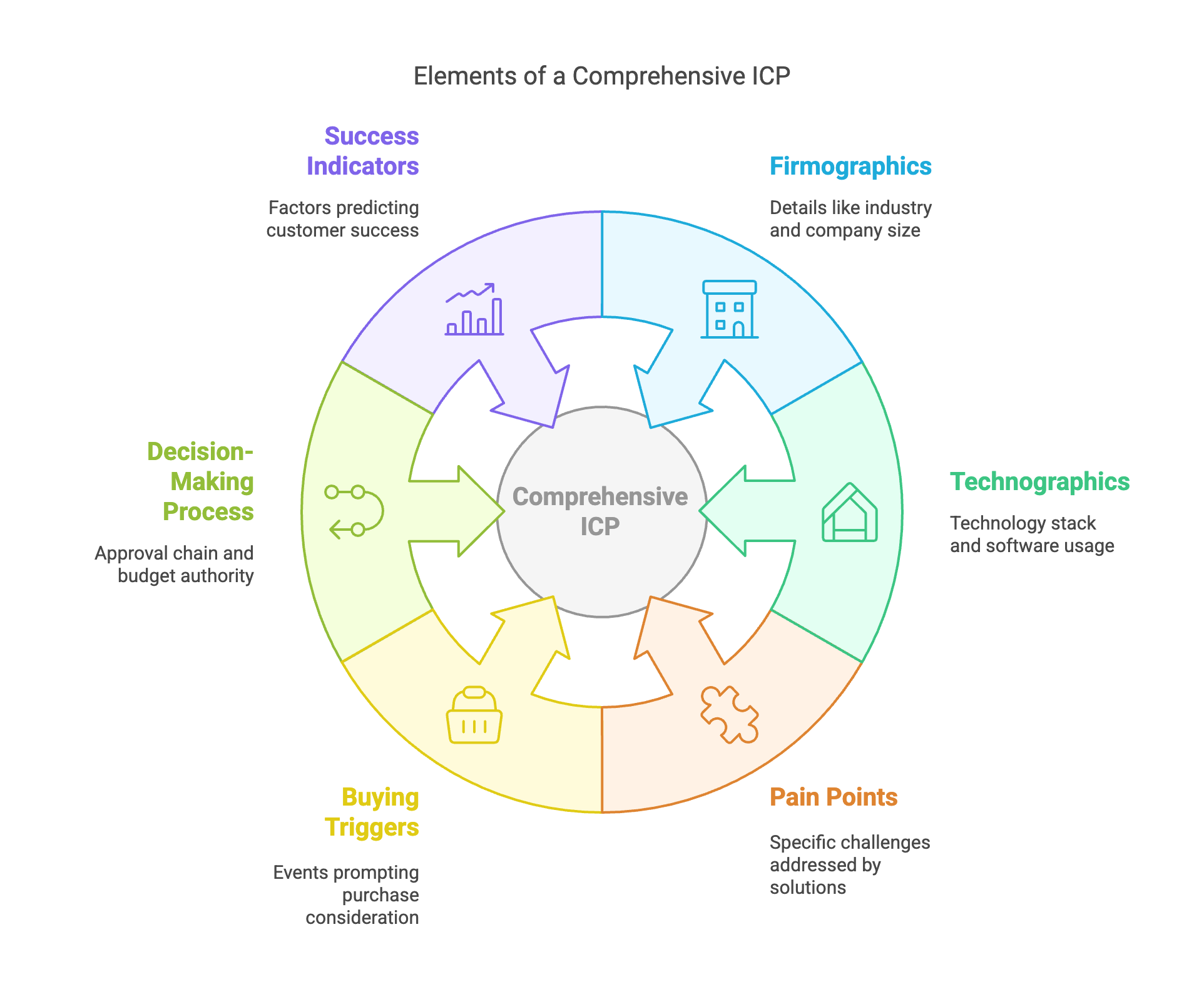
A clear ICP helps your team recognize high-potential leads immediately, allowing them to focus on the right opportunities from the start.
Start by analyzing your current customers. Look for patterns among those with high engagement and long retention. Use this insight to create a clear profile that your team can refer to throughout the process.
💡 Tip: Interview 3 to 5 of your best customers to validate your assumptions. You’ll uncover insights no spreadsheet can give you.
2. Source leads matching your target audience
Once your ICP is defined, the next step is finding leads that match it. This can be done through static databases or by collecting live data from platforms like LinkedIn, where people regularly update their profiles.
Finding aligned leads at the top of your sales funnel helps you avoid wasting time later. You also get cleaner data and better results from your outreach.
We recommend automating this step with tools like PhantomBuster’s LinkedIn Search Export to extract leads directly from LinkedIn searches. It allows you to:
- Extract targeted leads directly from LinkedIn search results.
- Filter prospects based on specific criteria like industry, job title, and location.
- Gather fresh data rather than relying on potentially outdated database information.
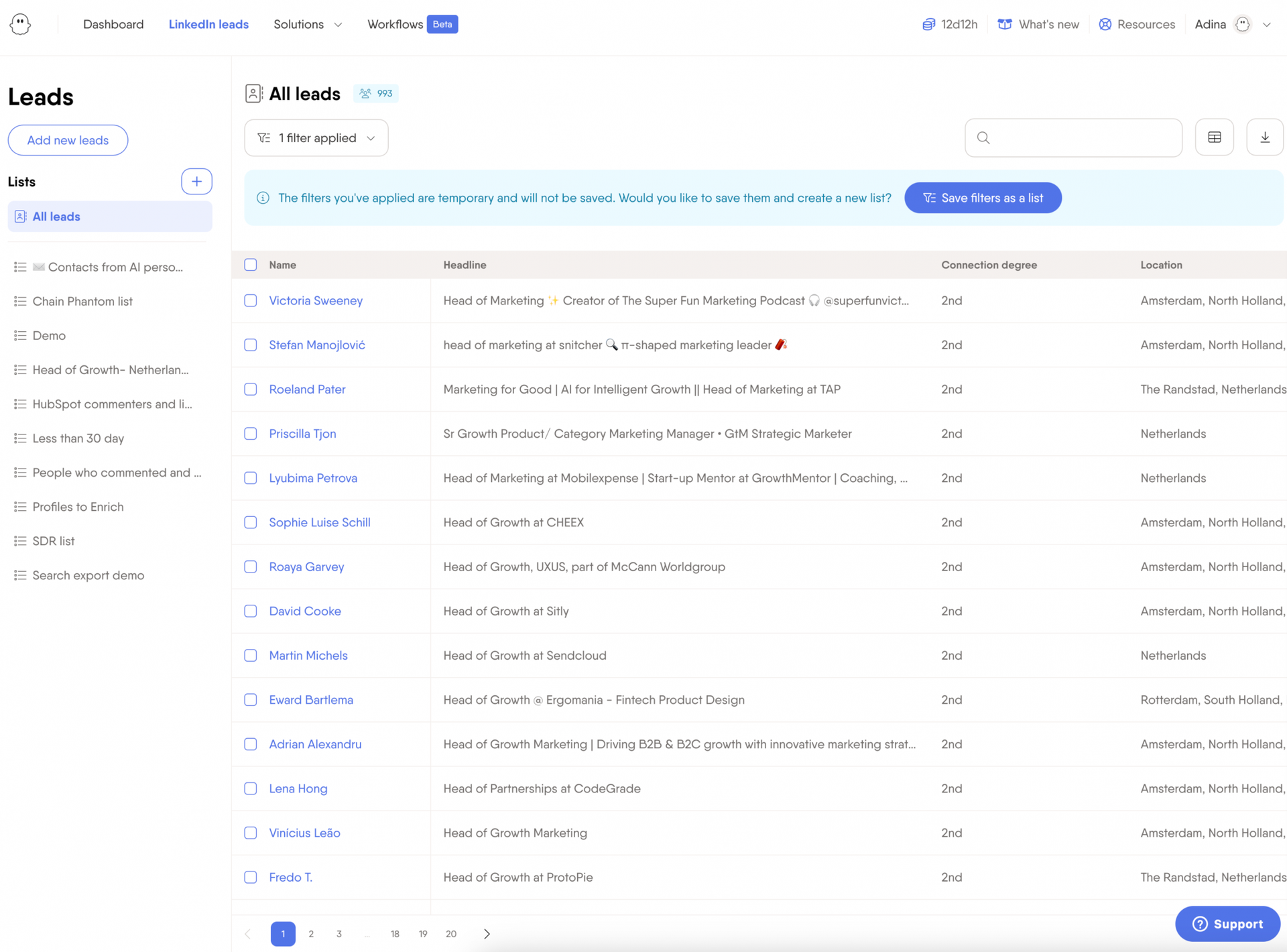
3. Enrich your lead data using automation tools
Lead data is often incomplete, especially if you’re collecting it manually or from basic forms. Lead enrichment fills in the gaps by pulling in more details, like company size, job title, or social activity.
Having this extra context gives your sales team a better chance of writing relevant messages and accurately qualifying sales leads.
PhantomBuster’s LinkedIn Profile Scraper simplifies this step by automatically gathering comprehensive information from LinkedIn profiles, including job title and company, location, experience and skills, recent activity, and even email when publicly available.
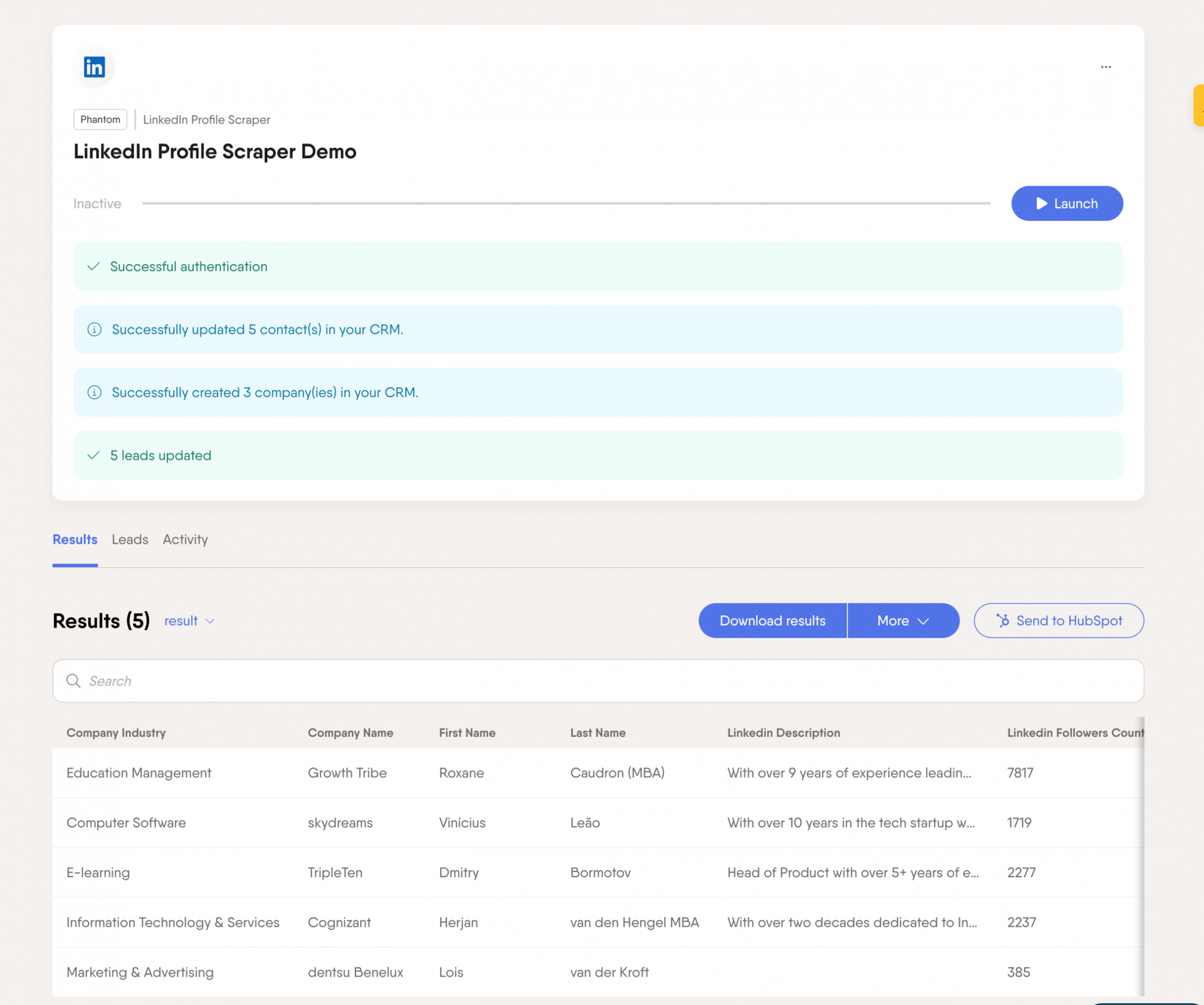
💡 Tip: Set up a regular enrichment schedule for new leads you add to your list. This will allow you to get a relevant list of enriched contacts ready for qualification.
4. Define your lead qualification criteria
Lead qualification is only useful if your criteria make sense. These are the signals that tell you whether a lead is worth pursuing. They can be demographic (like location or job title) or behavioral (like visiting your pricing page or engaging with a competitor’s post on LinkedIn).
Clear, documented criteria help your team make consistent decisions and reduce guesswork in the handoff between marketing and sales.
💡 Here are some criteria you can include in your lead scoring model:
Firmographic
– Industry (e.g., SaaS, consulting, education)
– Company size (e.g., 11–50 employees)
– Revenue range (e.g., $1M–$5M)
– Geographic location (e.g., North America or EMEA)
Demographic
– Job title (e.g., Head of Sales, Growth Manager)
– Seniority level (e.g., Director or above)
– Department (e.g., Marketing, Product, Operations)
Behavioral
– Downloaded a lead magnet
– Visited the pricing page twice in one week
– Registered for a webinar or watched a product demo
– Replied to a cold email or accepted a LinkedIn connection
– Invited team members during a free trial
– Interacted with your competitors’ content on LinkedIn
List the attributes of a strong lead based on your ICP, and assign weights or scores to each. Ensure both teams agree on the rules and update them regularly according to your real customers’ data.
5. Use AI to score leads based on your criteria
Scoring leads manually can be slow and inconsistent. That’s where AI steps in, helping match them to your criteria and generate a lead score automatically. That means faster decision-making and more accurate prioritization.
Try using PhantomBuster’s AI LinkedIn Profile Enricher to analyze LinkedIn profiles and assign lead scores based on your specific lead qualification criteria. This automation helps you evaluate leads objectively, process large volumes efficiently, and identify high-potential prospects that might be overlooked in manual scoring.
💡 Here’s a prompt example you can use for lead scoring:
Analyze this LinkedIn profile and give it a score out of 100 based on the following criteria:
– Job title is Head of Sales, VP Sales, or Chief Revenue Officer (40 points)
– Company size is between 11–200 employees (20 points)
– Located in North America or Europe (15 points)
– Profile mentions outbound or prospecting experience (15 points)
– Profile includes recent activity within the past 30 days (10 points)
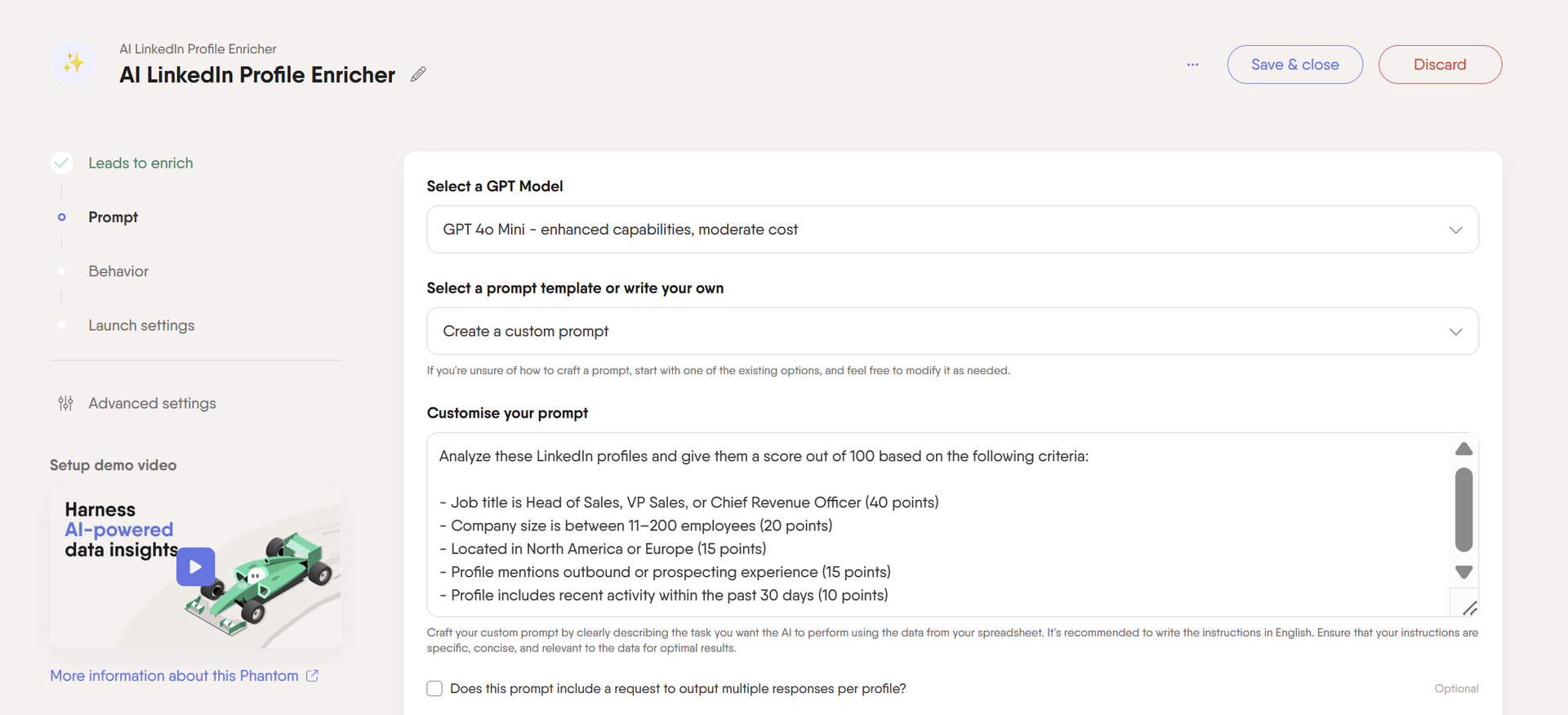
💡 Tip: When creating AI prompts for lead scoring, be as specific as possible about your criteria and review your AI scoring results regularly. If high scores aren’t converting, adjust the weighting of your criteria.
6. Leverage sales calls to ask key qualifying questions
Automation gets you far, but real conversations are where deeper insights happen. Discovery calls help validate what your data suggests and uncover details that tools can’t catch, like internal challenges, decision-making processes, or urgency.
Tools like Gong or Chorus can help you record and analyze these calls to identify which questions consistently reveal high buying intent. Asking the right questions during these calls improves win rates and keeps your pipeline healthy.
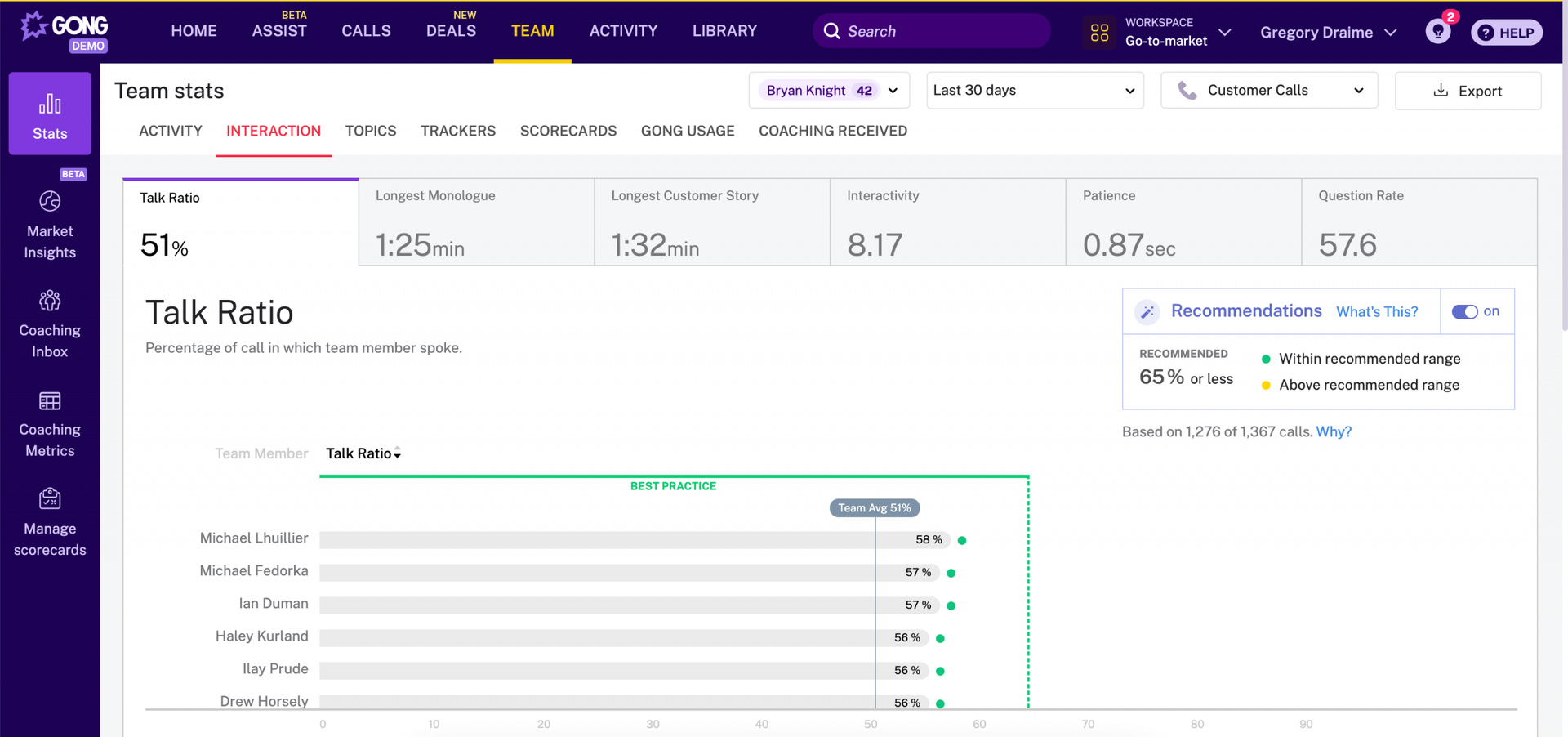
Work with your sales team to build a qualifying question set. Include topics like budget, timeline, goals, and authority. Use the answers to update your CRM and adjust lead scores if needed.
7. Review lead data and refine your qualification process
No process is perfect from day one. Regular reviews help you understand what’s working and what’s not. Maybe you’re scoring leads too strictly, or missing high-quality leads because of outdated criteria.
Keeping the system flexible lets you improve over time and stay aligned with evolving business goals.
Look at your sales outcomes. Compare high-scoring leads with actual conversions. Use that feedback to improve enrichment steps, update your criteria, or update your ICP.
💡 Tip: Set a recurring 30-minute sync between sales and marketing to review recent lead quality and make quick adjustments together.
Lead qualification frameworks
Once you’ve defined your ICP and set up your lead scoring, you still need a structured way to qualify each opportunity.
This is where frameworks come in. They give your sales team a shared language and a checklist for consistently evaluating leads.
| Framework | Key Focus | Questions/Criteria | Best For |
| BANT | Budget, Authority, Need, Timeline | Can they afford your solution?
Are you speaking to a decision-maker? Do they need what you offer? What’s their buying timeline? |
Simple sales cycles or early-stage teams |
| CHAMP | Challenges, Authority, Money, Priority | What problems do they need solved?
Who signs off on purchases? Can they afford it? Is this urgent for them? |
Solution-focused selling where need is key |
| MEDDICC | Metrics, Economic buyer, Decision criteria, Decision process, Identify pain, Champion, Competition | What KPIs matter?
Who owns the budget? How do they buy? Who is advocating for you internally? |
Complex B2B sales with multiple stakeholders |
| FAINT | Funds, Authority, Interest, Need, Timing | Do they have money available?
Are they decision-makers? Are they engaged? Do they have a real need? What is their timeline? |
Inbound leads or low-intent leads, where you must create urgency |
BANT
BANT is one of the oldest lead qualification frameworks, but it still works well for straightforward deals. It focuses on qualifying leads based on four key factors—budget, authority, need, and timeline.
This method helps your team quickly decide whether a lead is worth pursuing or not.
- Budget: Do they have the money to buy your solution?
- Authority: Are you talking to the person who can say yes?
- Need: Is there a clear problem you can solve?
- Timeline: When do they plan to make a decision?
💡 When to use: BANT is ideal for quick-win sales cycles or when you need a fast way to filter qualified leads at the top of the funnel.
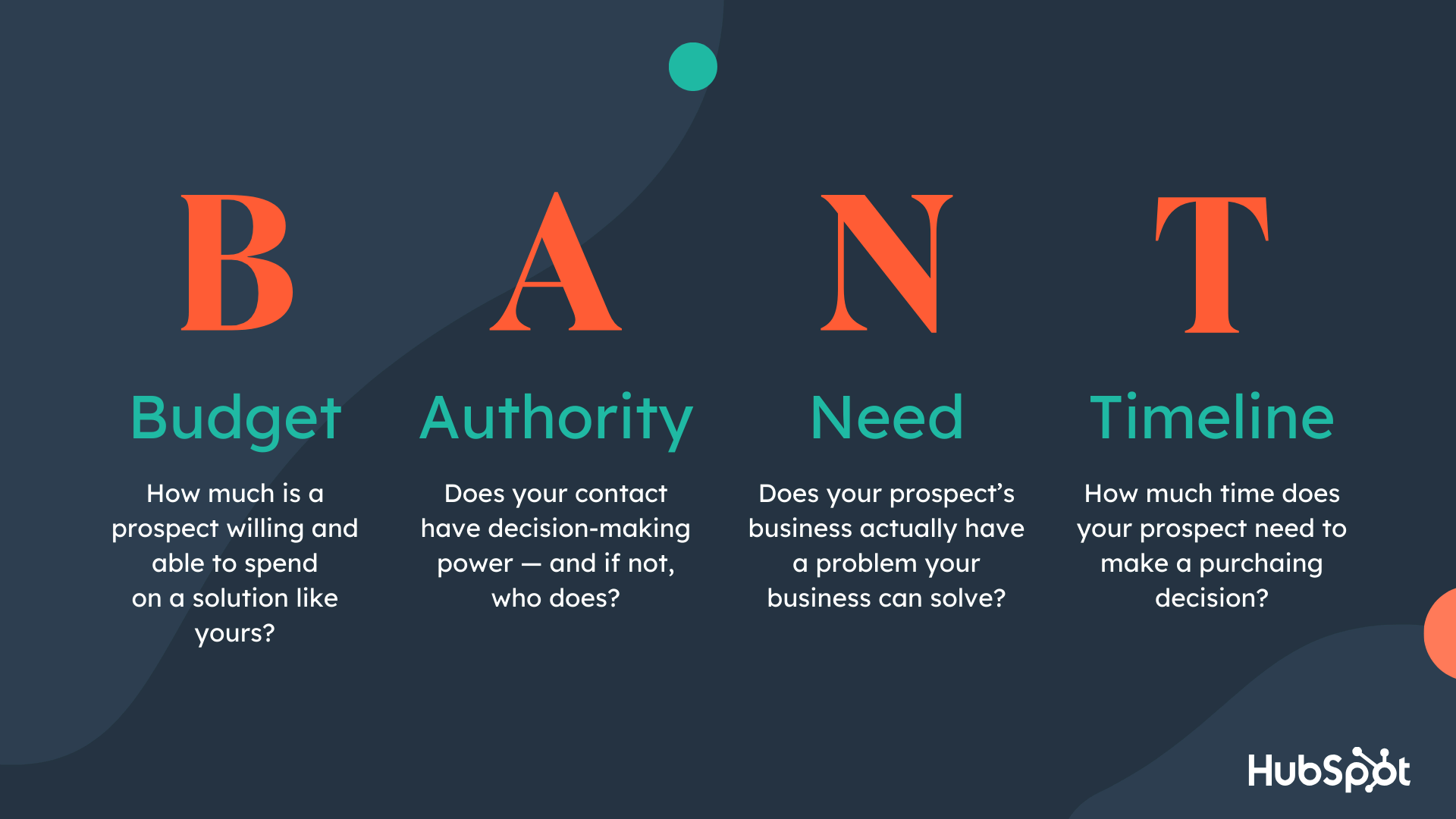
CHAMP
CHAMP flips the BANT model and starts with the lead’s challenges. It helps you uncover what problems they need to solve, who makes the decision, and how urgent the issue is.
It’s useful for consultative sales where the problem is still being defined.
- Challenges: What are they struggling with right now?
- Authority: Who approves the purchase?
- Money: Can they afford your solution?
- Priority: How urgent is solving this for them?
💡 When to use: CHAMP is a strong fit for inbound or early-stage conversations where your lead may not yet have a clear solution in mind.
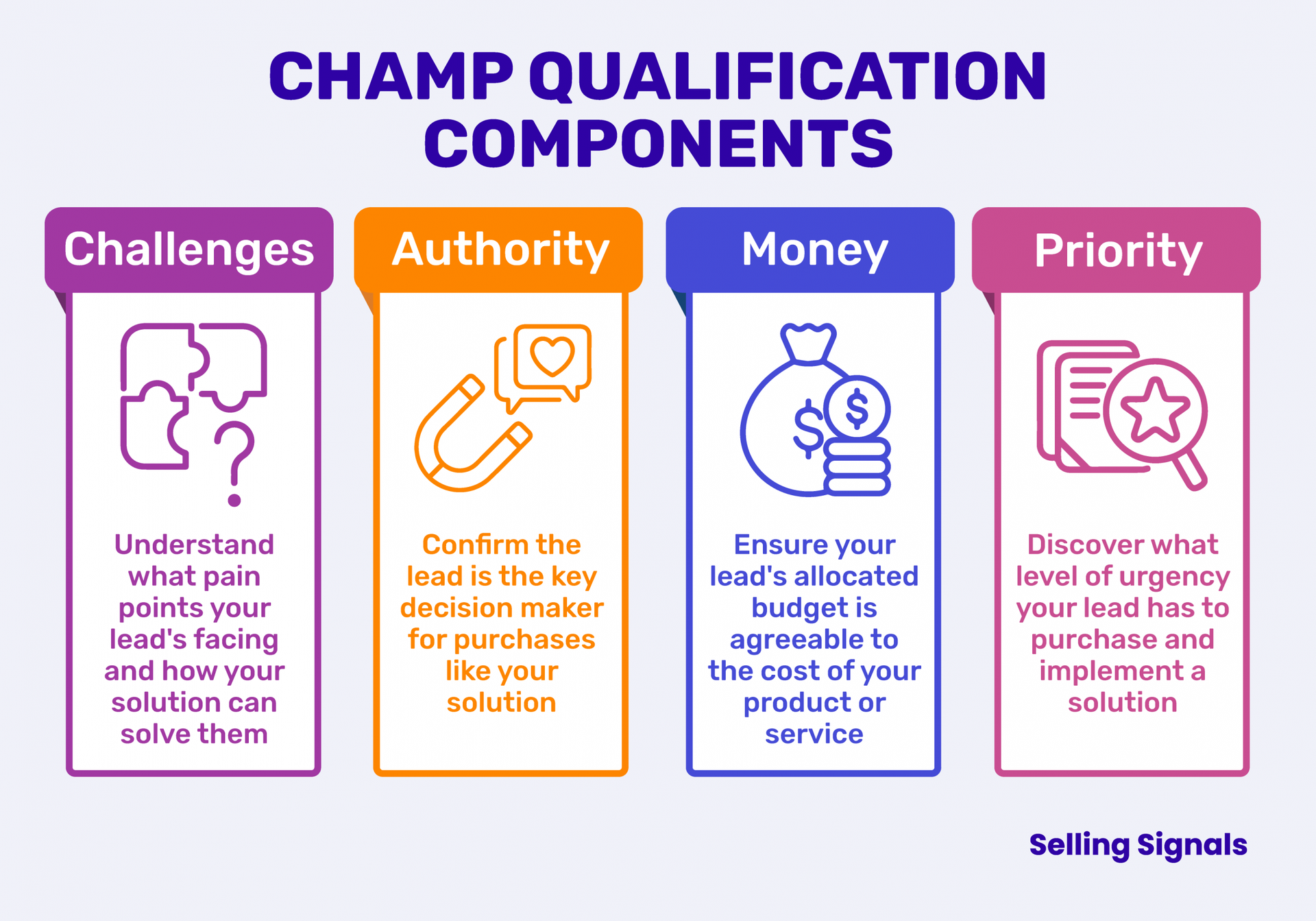
MEDDICC
MEDDICC gives you a full picture of the buyer’s environment. This lead qualification framework is designed for high-stakes sales with multiple stakeholders, long timelines, and detailed procurement processes.
It helps your team stay aligned and forecast more accurately.
- Metrics: What results are they aiming for?
- Economic buyer: Who controls the budget?
- Decision criteria: What factors influence their choice?
- Decision process: What are the steps to buy?
- Identify pain: What problem does your product solve?
- Champion: Who is your internal advocate?
- Competition: What other options are they considering?
💡 When to use: Choose MEDDICC for complex B2B deals where buying decisions involve several people, steps, and stages.
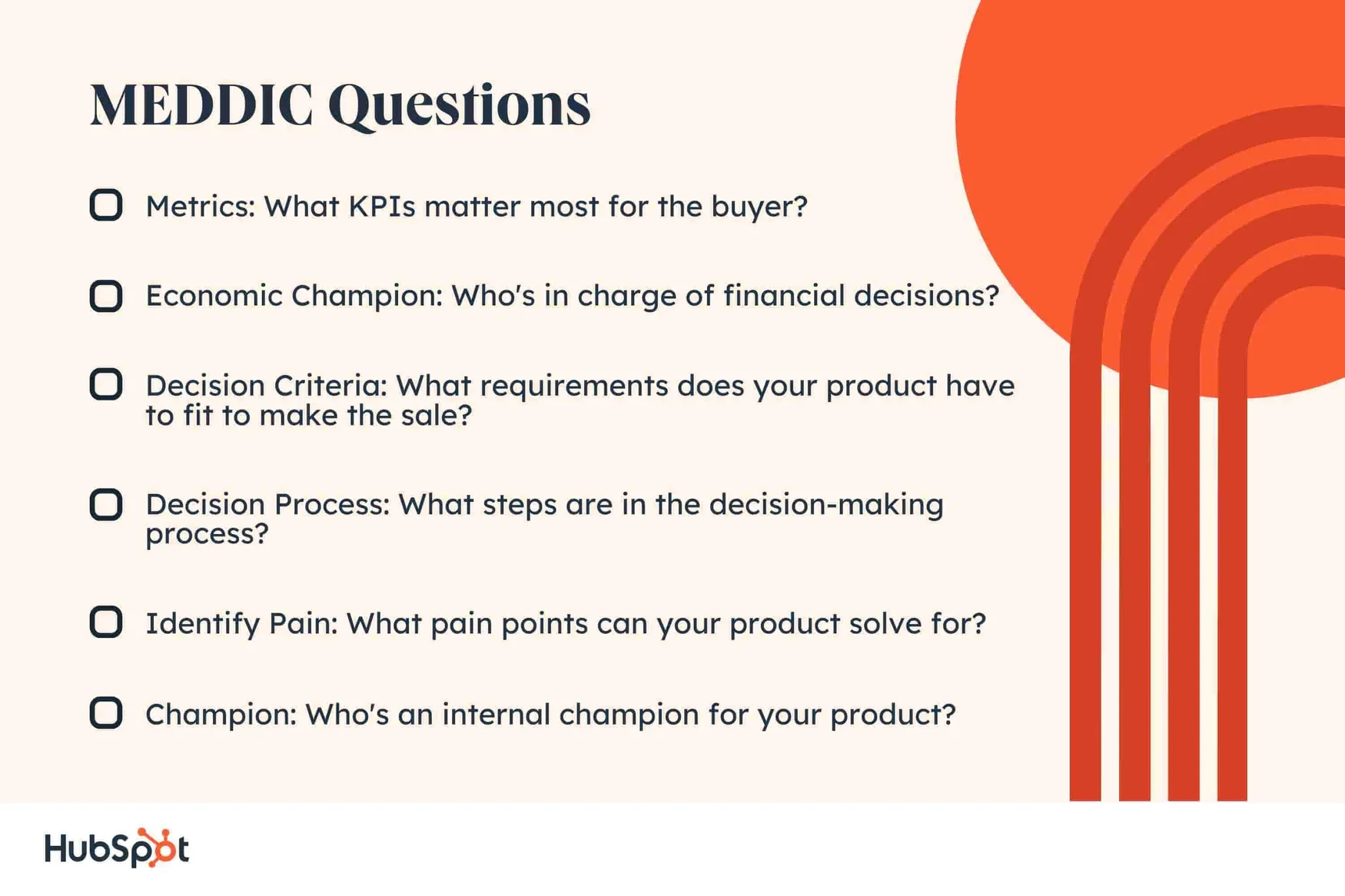
FAINT
FAINT works well when the lead hasn’t yet shown strong intent. It focuses on budget availability and building interest before qualifying based on need or urgency.
It’s especially relevant when generating leads through inbound channels or targeting a broad audience.
- Funds: Do they have the financial resources to buy?
- Authority: Are you speaking to a decision-maker?
- Interest: Are they curious or engaged with your offer?
- Need: Is there a relevant pain point you can solve?
- Timing: Is there a window where they might take action?
💡 When to use: FAINT helps qualify leads who may not be actively searching for a solution but show potential with the right outreach and nurturing.
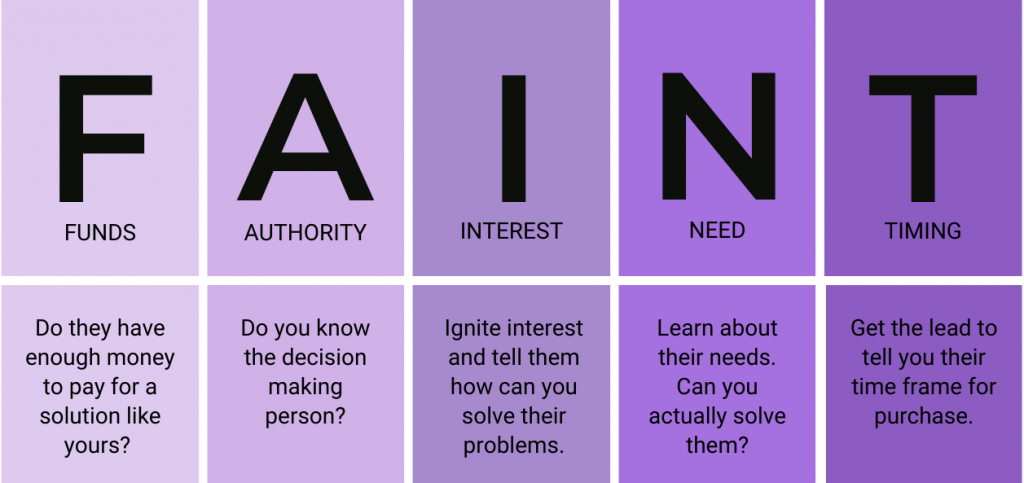
Lead qualification process FAQ
Qualified leads vs. unqualified leads
Qualified leads match your sales ICP and show genuine interest in your solution. They have the right needs, budget, and decision-making authority.
Unqualified leads don’t fit your ICP or lack sufficient interest. They typically don’t have the budget, authority, or need that makes them suitable prospects.
How can sales teams detect unqualified leads?
Watch for these warning signs:
- Misalignment with your ICP (wrong company size, industry, etc.).
- Vague descriptions of their challenges or needs.
- Consistent avoidance of budget discussions.
- Minimal engagement with your content or outreach.
- Inability to explain their decision-making process.
- No clear implementation timeline.
- Unrealistic expectations about your product.
- Consistently slow responses or frequent rescheduling.
Spotting these signals early helps you qualify out unsuitable prospects quickly.
What’s the difference between lead qualification and lead scoring?
Lead qualification is the overall process of determining if a prospect fits your ICP and shows genuine interest. It combines automated and manual evaluation methods.
Lead scoring is a tool within the qualification process that assigns numerical values to leads based on specific characteristics and behaviors, helping you prioritize your outreach.
Think of scoring as a way to rank qualified leads, not a replacement for the full lead qualification assessment.
Can I automate the lead qualification process?
Yes, you can automate significant portions of your lead scoring process, such as:
- Data collection and enrichment with tools like PhantomBuster.
- Engagement tracking through marketing automation.
- Lead scoring using AI-powered analysis.
- CRM updates with tools like the HubSpot Contact Career Tracker.
How can AI help sales and marketing teams qualify leads?
AI can analyze lead data at scale, detect patterns humans might miss, and score leads in real time.
It helps both teams make faster, data-driven decisions by highlighting who’s most likely to convert based on profile and behavior.
Why is alignment between sales and marketing important for lead qualification success?
When the marketing and sales teams agree on what a qualified lead looks like, they can work more effectively together.
Marketing sends better leads to sales, sales converts more of them, and the entire sales process runs more smoothly.
